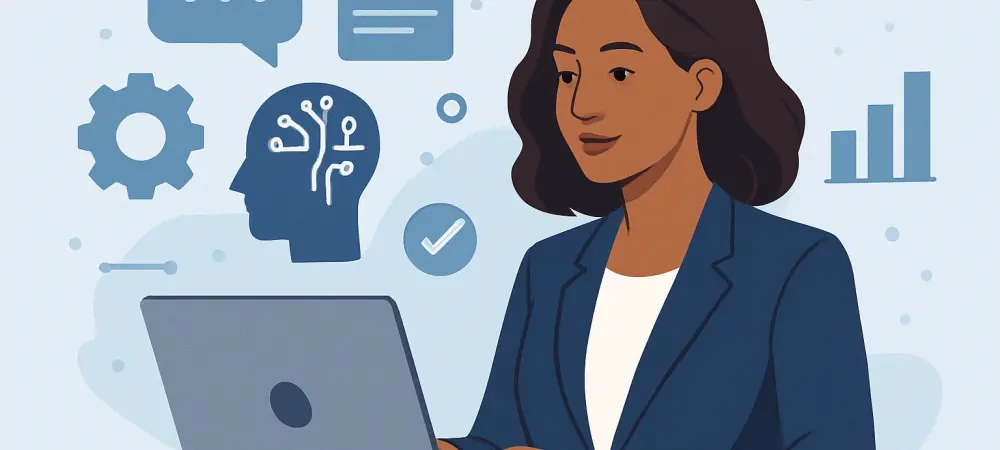I’m thrilled to sit down with Ling-Yi Tsai, an HRTech expert with decades of experience guiding organizations through technological change. Her deep knowledge of HR analytics and technology integration in areas like recruitment, onboarding, and talent management makes her the perfect person to discuss the growing importance of AI fluency for non-tech professionals. In this conversation, we dive into why embracing AI is essential, how to get started with it, and the personal and professional benefits of becoming comfortable with these tools. Ling-Yi shares her own journey, practical tips, and insights on navigating the challenges of adopting AI in everyday life and work.
How do you see AI fluency becoming a game-changer for non-tech professionals in today’s workforce?
I think AI fluency is quickly becoming a must-have skill, even for those who don’t work in tech. It’s not just about keeping up with trends; it’s about staying relevant. In HR, for instance, I’ve seen how AI tools can streamline processes like candidate screening or employee engagement analysis, which frees up time for more meaningful human interaction. For non-tech professionals, learning AI is like learning to use email or smartphones years ago—if you don’t adapt, you risk being left behind. It’s not about replacing your skills but enhancing them to make you more efficient and valuable in your role.
Can you share a moment in your career when you realized AI was something you needed to understand and use?
Absolutely. A few years back, I was working on a large-scale recruitment project for a client, and we were drowning in resumes. A colleague introduced me to an AI-powered tool that could analyze and rank candidates based on specific criteria. At first, I was skeptical, but seeing how it cut our workload in half while improving the quality of our shortlist was a wake-up call. I realized that AI wasn’t just a buzzword—it was a practical solution I couldn’t ignore if I wanted to stay effective in my field.
What motivated you personally and professionally to start integrating AI into your life and work?
On a personal level, I wanted to simplify things like planning family trips. I started using AI tools to suggest itineraries based on my preferences, and it saved me hours of research. Professionally, my motivation was to improve data-driven decision-making in HR. For example, using AI analytics to identify patterns in employee turnover has helped me advise companies on retention strategies. Both reasons kept me going, especially when learning new tools felt overwhelming—having a clear purpose made the effort worthwhile.
What’s a good starting point for someone who’s completely new to AI and feeling a bit intimidated by it?
I’d say start small and personal. Pick something in your daily life, like cooking, and try an app like SuperCook, which suggests recipes based on what’s in your fridge. It’s low-stakes, and you get to see AI in action without pressure. Just play around with it—input ingredients, see what recipes pop up, and adjust as you go. The key is to experiment without overthinking it. Once you’re comfortable with something simple like that, you’ll feel more confident tackling AI tools for work.
Have you used AI to discover new tools or apps that ended up being helpful in your professional life?
Yes, I’ve used AI chatbots to brainstorm tools for HR tasks. One discovery was Grammarly’s AI features for polishing reports and communications. It’s been a lifesaver when I’m drafting complex emails or presentations for clients. I also came across Zapier through AI suggestions, which helped automate repetitive tasks like syncing data between platforms. It’s amazing how AI can point you to solutions you didn’t even know existed, tailored to your specific needs.
How do you manage using multiple AI tools without getting overwhelmed, especially across personal and work contexts?
It’s all about prioritizing and pacing yourself. I focus on mastering one tool at a time. For instance, I got comfortable with Canva’s AI for creating visuals for presentations before moving on to something more complex like Notion AI for project management. I’ve found Canva incredibly intuitive, which built my confidence. But I’ll admit, Notion AI took more trial and error to figure out. My tip is to integrate tools into your routine gradually and stick to ones that align with your immediate goals, whether that’s personal organization or work efficiency.
What’s your approach to dealing with frustration or setbacks when learning a new AI tool?
I’ve definitely hit roadblocks, especially with tools that have a steeper learning curve. My approach is to step back and revisit my ‘why’—why I wanted to learn this in the first place. That usually reignites my motivation. I also break the learning into smaller chunks, focusing on one feature at a time instead of trying to master everything at once. And honestly, I’m not afraid to search for tutorials or ask for help from peers. Persistence pays off, and every small win—like automating a task—feels like a big victory.
What’s your forecast for the role of AI fluency in shaping the future of work, especially for non-tech roles?
I believe AI fluency will become as fundamental as digital literacy is today. In the next five to ten years, I expect most non-tech roles—whether in HR, marketing, or education—will require at least a basic understanding of AI tools to stay competitive. It won’t just be about efficiency; it’ll be about innovation and collaboration, as AI helps bridge gaps between technical and non-technical teams. My prediction is that those who embrace AI early will have a significant edge, not just in job security but in creating new opportunities for themselves and their organizations.

